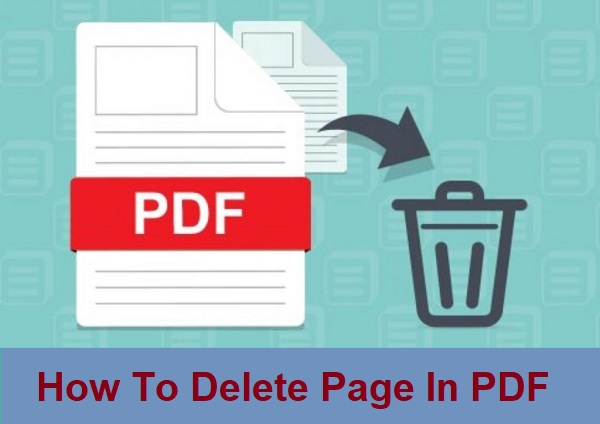Giving a professional editor your document for editing and proofreading cannot be overemphasized. This is so because they will ensure that your work is free from all manner of errors ( in grammar, punctuation, spelling, and typography), has an elevated style, clarity, sentence structure, and coherence.
However, hiring a proofreader to edit your document is a great idea, but it’s a different ball game for the hired editor to deliver the work effectively remains a subject of discussion. A good number of editors take little to proofread, hoping to see any obvious errors in a document they are editing. But a quick and cursory reading, especially after they have been working long and hard on a paper, usually misses a lot.
So, this post will shed more light on effective proofreading. The following editing and writing tips below can tremendously boost your proofreading skills and make sure you turn out error-free content.
1. Use Software When Editing (PDFBear)
As you all know, Microsoft Word is a steady, classic word processor. As an editor, one needs any software that will make his work rather easy and a delight. That’s when a non-linear word processor is helpful.
Do you have any documents in PDF that you want to edit, or you want to delete PDF pages from? With PDFBear, you can delete pages in your docum+ent with ease, or compress any of your PDF files.
Irrespective of what you want to do with your documents – (altering some content, replacing a picture, or annotating a couple of lines), PDFBear remains the best online PDF SaaS product that will provide the functionality you need to become a PDF- editor cum proofreader specialist.
Besides, PDFBear offers up to 25 PDF functions which include a PDF converter and compressor. its many great features allow you to split, merge, repair, rotate, delete, protect, unlock and share your document.
Read More: Learn How to Convert XLS Files to PDF in Just a Few Clicks!
2 . Edit a Hard Copy
In the course of editing and proofreading, If you as an editor use your computer screen or reading off a tablet for a long time, chances are that you will miss common errors.
Editing from a printed copy is a proofreading technique that may allow you to see various misspellings and other punctuation errors you did not catch the first time through. Printing out the document for reading makes it easier to see any error compared to the one reading from the computer, which is strenuous. Also, be sure to check page numbers for order, if your writing spans more than one page.
It should be noted that when you’re typing in changes from a proofreading session, you may miss some of your markup suggestions if you used a pencil or black pen. Using a biro will not allow you to miss any of the corrections during editing.
3. Don’t Solely Rely on Spelling Checkers
There is no gainsaying in the fact that Editors deploy spell checkers during proofreading of documents. Though using these useful tools is not a bad idea, they are far from foolproof. A Spell checker has a limited dictionary, so some words that show up as misspelled may just not be in their memory. Also, the spell checker will not spot words that are wrongly spelled. For example, by typing ‘your’ in place of ‘you’re’, ‘to’ instead of ‘too’, or ‘there at’ in the instant of ‘their’, the checker will pick the error.
Don’t be surprised. Spell check can sometimes say a word is misspelled when it isn’t. But then the editor can lookup any word flagged up as incorrect. This can be time-consuming on a long document – and that’s probably why many people don’t bother with it – but it can find those final few errors you missed. Spell check is a feature in every word processor, but many people don’t bother to use it.
4. Read the Paper Backwards
Another helpful tip that a professional proofreader can use in editing a document is reading a paper backward. What this simply means is that an Editor starts by proofreading the last sentence. He reads that sentence, making sure there are no misspellings and mechanical errors. He can move to the next to the last sentence. He does this because reading a document backward puts the paper out of context. A proofreader can isolate grammatical and sentence issues by reading the draft backward.
This technique, of course, helps check to spell because content, punctuation, and grammar will not make any sense if the editor reads the document from the last sentence up. His main focus should be on entirely the spelling of each word. He can also read backward sentence by sentence to check grammar; this will help him avoid being distracted by content issues.
5. Read Aloud
Reading every word aloud but slowly can immensely help any editor spot places for better word choice or improving sentence structure, like run-on and fragments, at the same time make unconscious corrections having heard how the words sound together or written. This helps you determine the flow and rhythm, which are important elements every piece of content must carry.
Notably, When reading silently, your eyes can jump over the words on the page. To avoid making mistakes while editing, reading it aloud to hear how the word sounds in your ears will make you spot the mistake.
Conclusion
The importance of proofreading can’t be over-emphasized. It focuses attention on removing surface errors in a draft such as grammatical and punctuation errors, as well as wrong spellings.
How can editing be seamless if you as a proofreader can make use of editing software for your document? Reading your document aloud and backward can make you find correct words. More importantly, not relying on spell check for spelling, and editing in hard copy will help you not to miss an error. Though this takes a little extra time, you surely turn out a better document.









